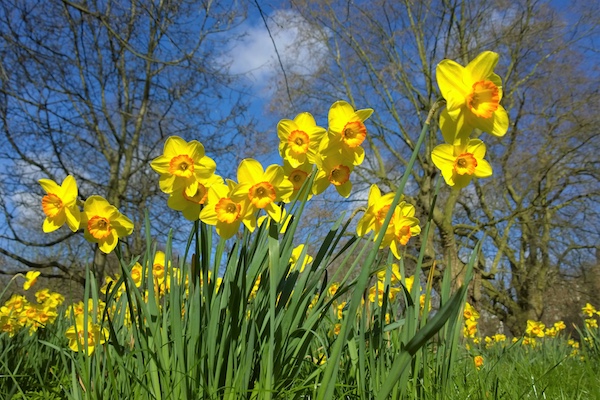
Vivaldi’s ‘Spring’ from The Four Seasons
In the realm of classical music, few compositions are as enchanting and evocative as Antonio Vivaldi’s “Spring,” the inaugural concerto in his renowned collection, The Four Seasons. Though written around 1723, this timeless work captures the essence of the season with a brilliance that continues to resonate with audiences today. Let’s embark on a musical journey to explore the vibrant world of “Spring” and its enduring allure.
The Spring Sonnet
Italian
Allegro
“Giunt’ è la Primavera e festosetti
La Salutan gl’ Augei con lieto canto,
E i fonti allo Spirar de’ Zeffiretti
Con dolce mormorio Scorrono intanto:
Vengon’ coprendo l’ aer di nero amanto
E Lampi, e tuoni ad annuntiarla eletti
Indi tacendo questi, gl’ Augelletti;
Tornan’ di nuovo al lor canoro incanto:”
Largo
“E quindi sul fiorito ameno prato
Al caro mormorio di fronde e piante
Dorme ‘l Caprar col fido can’ à lato.”
Allegro
“Di pastoral Zampogna al suon festante
Danzan Ninfe e Pastor nel tetto amato
Di primavera all’ apparir brillante.”
English
Allegro
Springtime is upon us.
The birds celebrate her return with festive song,
and murmuring streams are softly caressed by the breezes.
Thunderstorms, those heralds of Spring, roar, casting their dark mantle over heaven,
Then they die away to silence, and the birds take up their charming songs once more.
Largo
On the flower-strewn meadow, with leafy branches rustling overhead, the goat-herd sleeps, his faithful dog beside him.
Allegro
Led by the festive sound of rustic bagpipes, nymphs and shepherds lightly dance beneath the brilliant canopy of spring.
The Arrival of Spring: Allegro
As the first movement unfolds, Vivaldi welcomes us to the energetic awakening of spring. The Allegro bursts forth with lively melodies and dynamic orchestration, thus echoing the blossoming of flowers and the jubilant songs of birds. Vivaldi was a master of the Baroque era. In this piece he employs fast-paced scale passages and spirited rhythms to convey the vivacity of the season.
A Tranquil Interlude: Largo e pianissimo sempre
In the second movement, Vivaldi guides us to a pastoral scene. The Largo e pianissimo sempre envelops the listener in serentity. The music portrays a goatherd peacefully resting amidst the natural beauty of spring. Slow, lyrical phrases create a sense of tranquility so inviting contemplation amid the harmonious sounds of nature.
Spring’s Dance – Shepherd’s Celebration: Danza pastorale. Allegro
The concerto concludes with a lively dance in the third movement. Vivaldi paints a vivid picture of a festive celebration. The joyous rhythms and spirited melodies capture the exuberance of the season. It’s a triumphant finale, leaving the audience uplifted and immersed in the jubilation of spring.
Expressive Elements and Programmatic Inspirations
“Spring” is a testament to Vivaldi’s innovative use of form and instrumental textures. Furthermore, he vividly depicts the changing scenes of spring through trills, scale passages, and dynamic contrasts. Inspired by nature and poetry, Vivaldi even provided sonnets to accompany each season, allowing listeners to delve deeper into the imagery behind the music.
Enduring Popularity
Centuries after its creation, “Spring” from The Four Seasons remains one of Vivaldi’s most celebrated works. Indeed. its enduring popularity lies in its ability to transport audiences to a world of renewal. The warmth of the sun, gentle breezes, and vibrant colors of blossoming flowers come to life through the expressive language of music.
As we listen to Vivaldi’s “Spring,” we are invited to witness the symphony of renewal that is the changing season. The concerto’s lively Allegro, tranquil Largo, and celebratory Danza pastorale remind us of the timeless beauty of nature and the enduring power of music to capture its essence. In the magic of “Spring,” Vivaldi’s genius continues to bloom. In doing so he captivates hearts and spirits with a symphony of renewal.
Read more about Vivaldi and his music on our composer blog post.
- Italian and English words taken from baroquemusic.org ↩︎